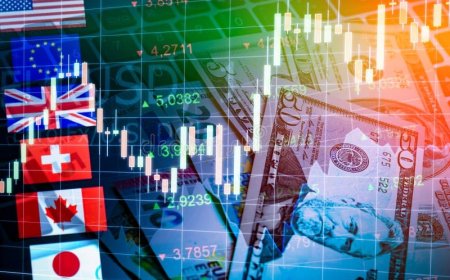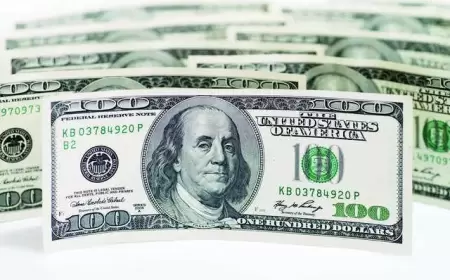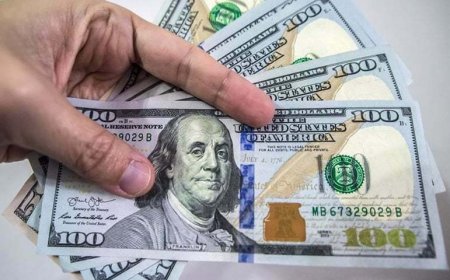Forex Dollar Strengthens for Second Week as Rate Cut Bets Fade
Dollar shines for second week as rate cut hopes fade. What's driving the greenback's strength?

The U.S. dollar is poised for its second consecutive weekly gain, buoyed by signs of a resilient American economy and cautious remarks from central bankers about future interest rate cuts. This has led traders to revise their expectations for swift and significant reductions in borrowing costs.
Riskier currencies like the Australian and New Zealand dollars, which tend to rise when markets are optimistic, are facing their biggest weekly losses since November and July, respectively. This shift in sentiment reflects a decline in market expectations for a U.S. rate cut in March, with the current probability dropping from 75% to 57%.
Economic data and central bank pronouncements
The clear message from recent U.S. economic data and central bank statements is that markets were overly confident in expecting aggressive rate cuts this year," said Richard Franulovich, head of foreign exchange strategy at Westpac. "This, combined with renewed turmoil in China's property and financial markets, has pushed the dollar back into the driver's seat."
The dollar index, which measures the greenback's value against a basket of six major currencies, has climbed 0.9% so far this week. The Japanese yen has been the biggest loser, down 5% year-to-date as data and a deadly earthquake have eroded investor confidence in the Bank of Japan's ability to raise rates soon.
Japan's Inflation Slowdown
Adding to the yen's woes, Japan's core inflation softened to 2.3% in December, its weakest annual pace since June 2022. This takes the pressure off policymakers to take urgent action, further weakening the yen by 0.2% to 148.44 per dollar.
"The market's realization that the Bank of Japan is unlikely to raise rates quickly, coupled with the recalibration of expectations for U.S. rate cuts, has already fueled the dollar's rise against the yen," explained Jane Foley, a strategist at Rabobank.
Other Currency Movements
Elsewhere in Asia, Friday's currency movements were subdued. The euro edged down 0.6% for the week to $1.0884, while sterling dipped 0.4% to $1.2705. The Aussie benefited from stabilizing iron ore prices and edged up 0.1% to $0.6578, while the kiwi remained under pressure at $0.6099.
Global Economic Factors
Strong U.S. labor market data released on Thursday, showing the lowest weekly jobless claims in nearly 18 months, further dampened expectations for rate cuts. Two-year Treasury yields, which reflect short-term interest rate expectations, have climbed 22 basis points this week to 4.3587%.
Earlier data also revealed higher-than-expected retail sales in December. Federal Reserve Governor Christopher Waller's comments on Tuesday, suggesting the U.S. economy allows for a "careful and slow" approach to policy adjustments, were interpreted as pushing back against aggressive rate-cut bets.
Similar hawkish tones from European central bankers have also tempered hopes for rate cuts in Europe, limiting the euro's fall against the dollar and boosting crosses like euro/yen and euro/swissy.
An unexpected jump in British inflation triggered a sharp pullback in bets on Bank of England rate cuts, lending support to sterling.
Meanwhile, deepening concerns about China's property market spooked investors, leading to sharp declines in mainland stocks and the yuan. The Chinese currency weakened to an almost two-month low of 7.1999 per dollar before state-bank buying stepped in to provide some support.
Bitcoin Pullback
In the cryptocurrency world, Bitcoin dipped to a five-week low of $40,484 overnight as traders cashed in profits following the U.S. approval of spot bitcoin exchange-traded funds. The cryptocurrency surged 150% in 2023 as investors anticipated the approval, paving the way for potential entry from institutional players.
While $1.9 billion flowed into nine new bitcoin ETFs in their first three trading days, it fell short of some optimistic forecasts for multi-billion dollar inflows on day one.
Conclusion
The dollar's strength reflects a confluence of factors, including a robust U.S. economy, cautious central bank talk about rate cuts, and turmoil in China's property market. Riskier currencies are bearing the brunt of this shift in sentiment, while unexpected inflation surges in the UK and Japan offer temporary reprieve for their respective currencies. Bitcoin's rally might be experiencing a breather after the long climb, but it remains to be seen if the approval
Also Read: Forex Dollar Strengthens as U.S. Retail Sales Boost Confidence - Latest Money Market Trends





























































